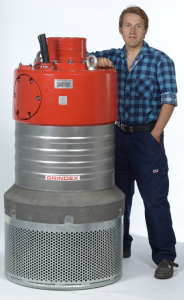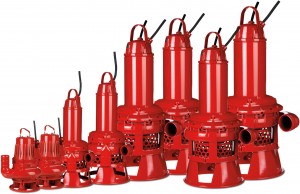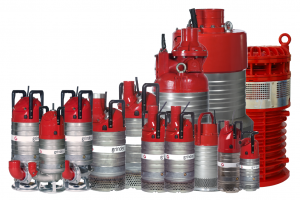Tired of pump failure? Choose wisely.
 According to the PIA (Pump Industry Australia), the most common reasons for pump failure are the direct result of incorrect pump type, installation or problems with equipment allied with the pump. Choosing the correct pump for your particular installation is the first step towards extending the overall lifespan and success of your pumping installation.
According to the PIA (Pump Industry Australia), the most common reasons for pump failure are the direct result of incorrect pump type, installation or problems with equipment allied with the pump. Choosing the correct pump for your particular installation is the first step towards extending the overall lifespan and success of your pumping installation.
As there are a wide range of pump manufacturers offering their products and services, it can be difficult to know what product to choose, or even where to begin.
In order to keep your pump pumping, here is a guide to the major pump types and their uses.
Drainage pumps
A drainage pump is the most commonly used pump type at construction sites, and is used for pumping water with less abrasive solids such as clay. Sand and solids in suspension can also be pumped up to the size of the strainer holes (normally 7-12 mm). As sand is quite abrasive to the pump, it must not be too concentrated.
One of the biggest problems facing drainage pumps is pump failure when the equipment is forced to run dry. Grindex drainage and sludge pumps provide an effective solution that incorporates an air valve to cool the pump if this was to occur. Their ability to run dry is also backed by a two-year dry burnout warranty.
According to Chris Molloy from Grindex’s exclusive Australian supplier, FITT Resources, the Grindex drainage and sludge pumps outperform all others on the market in terms of their reliability and performance.
”Unlike any other pumps, they have an inbuilt DOL/Soft Starter and SMART motor protection to protect the pump against electrical problems. This could include overheating, phase loss and a guard to ensure the pump runs in the correct direction.,” said Mr Molloy.
“They provide hassle-free dewatering as they are a ‘plug and pump’ system that does not require external control.”
Stainless steel pumps
With corrosion a top problem within the pump industry, stainless steel pumps offer a reliable solution.
Pumps made of stainless steel are often used in copper mines, gold mines and other applications with corrosive fluids. An aluminium pump can handle water with pH values from 5-8, while a stainless steel pump can cope with pH values from 2-10.
These pumps are intended for use in demanding applications such as mines, process industries, fish farms and harbours, which can quickly destroy conventional pumps.
INOX electrical submersible drainage and sludge pumps from Grindex, for example, are made of acid-proof stainless steel, allowing them to operate in applications that would destroy aluminum pumps in matter of weeks or even days. The INOX pumps are designed to meet the tough conditions in mines, coal power plants and other worksites that deal with corrosive water and sludge. They are also ideal in applications where saltwater is pumped, like shipyards, construction works in harbors and offshore projects.
Slurry pumps
Pumping slurry is one of the most demanding applications for any pump. Parts wear out, maintenance and repair cost are high, and in many cases, frequent pump failures lead to costly production downtime.
As the pumps are needed to withstand abrasive solids in suspension such as sand, gravel and concrete in high concentration, according to the PIA, pump selection for slurry pumps is a complex process requiring close cooperation between the pump manufacturer and the eventual end-user.
To cope with the abrasives, the hydraulic parts of a slurry pump are often made of a very hard metal alloy and are equipped with an agitator for improved performance.
Grindex have released a new slurry pump series called ‘Bravo,’ which provides a solution to the rising costs of slurry handling. They have done this by developing slurry pumps that can handle the toughest, high-wear applications.
The Bravo pumps are specially designed for pumping slurry and fluids with a high content of highly abrasive solids in sizes up to 50 mm at maximum 17-45 metre head / 28-130 litres fluid per second. Typical applications include coal and ore slurries, dredging, cleaning of settling ponds, bentonite and coal washing water, among many others.
 Plug and pump
Plug and pump
When working on a pumping project, speed and ease of installation can play a large role in reducing costs.
An electrical submersible pump is easy to use as you just plug it in and it pumps. Several small pumps placed where the need is, can pump water to a dedicated collecting pit through long hoses. Small pumps that weigh only 15-25 kg can easily be carried by hand to different locations on site as required.
In the collection pit, a bigger pump can be installed to pump the water away from the site. By connecting hoses from several pumps to the pit, a large area can easily be dewatered with just a few pumps.
Grindex Toolbox
The online Grindex toolbox can help you choose the right pump for your particular project. The toolbox includes a pump browser, pump selection tool, spare part selection tool, liquid guide and a range of technical articles to help you choose the right pump.
Simply select your required flow, vertical head and hose length and wait for the generator to point you in the right direction toward choosing the correct pump, or contact Fitt Resources for assistance from their professional staff with industry and product experience.
